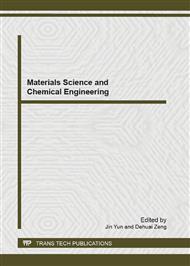p.765
p.770
p.777
p.783
p.789
p.795
p.802
p.808
p.813
Structural Evolution and Optical Properties of TiO2 Thin Films Prepared by DC-Reactive Sputtering Technique
Abstract:
Titanium dioxide (TiO2 ) thin films have been deposited on glass substrates under various conditions by using a homemade reactive DC sputtering technique. The TiO2 has unique characteristics and economical alternative material for transparent conductivity oxide thin films compared with other materials. In this study, titanium (Ti) has been used as a target while argon (Ar) and oxygen (O22</subthin films has been measured by using a calibrated I-V meter. On the other hand, the transparency, microstructure and component of TiO2 thin films have been investigated respectively by using UV-VIS spectrophotometer, XRD and SEM (EDX). The thickness of TiO2 films, the grain size and the band gap have been also successfully estimated. As a result, the conductivity of films increased for Dt at 1 hour to 3.5 hours and decreased for Dt at 4 hours. It means that the optimum Dt was at about 3.5 hours. It may be related to the thickness (structures) of the films. In addition, the thickness and grain size increased by increasing Dt, while the band gap decreased when the film structure changed from non-crystalline structure to crystalizing structure.
Info:
Periodical:
Pages:
789-794
Citation:
Online since:
May 2013
Price:
Сopyright:
© 2013 Trans Tech Publications Ltd. All Rights Reserved
Share:
Citation:


